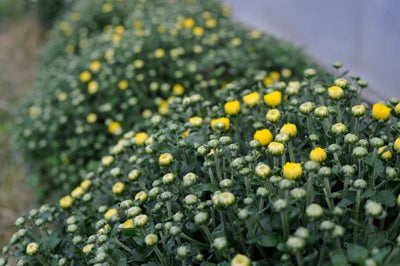Mums are a sure sign of fall
Published 1:49 pm Friday, September 30, 2022

- VAIL STEWART RUMLEY | DAILY NEWS FALL DISPLAY: Chrysanthemums, a popular and common fall flower, are new perennials capable of wintering in most northern latitudes.
|
Getting your Trinity Audio player ready...
|
My youngest daughter, Willa Grace (6), asked me what my favorite season is this week. I really had to think about it! I am a seasonal kind of guy, each season has its pros and cons but when we come to the end of one season, I am looking forward to the next. I suppose I can’t really choose because I love so many things about each season.
In the spring, there are vibrant colors, beautiful flowers and a sea of new green growth everywhere you look. In the summer there is the beach, wearing shorts and getting that great vitamin D your doctor warns you against, and of the course the beach.
In the fall, there are comfy clothes, good food, amazing colors, and Thanksgiving. Winter time is a time of peace, rest, and the celebration of the birth of our Lord and Savior. The cool season is a bit of a reset button for me but boy do I look forward to spring coming again.
This week has been absolutely wonderful, the beginning of fall actually feels like fall. Nice cool nights and more than tolerable daytime temperatures. I can’t remember the last time that happened.
My air conditioner has been off and the windows have been up. My fall veggies are looking great with the onset of a little cooler weather too. I have also noticed my mums starting to bloom in the garden. Mums are another sign that fall is beginning to blossom. We don’t usually think of fall in this manner but the beautiful colors expressed by these flowers are sure to liven up any landscape or dinner table.
A trip to the grocery store or the local nursery is sure to reveal a sea of color from these gorgeous flowers. There are large pots and cute little pots that can be given as presents to spread a little cheer. Mums can be cut for arrangements or kept in pots to use as centerpieces on the table or just a touch of color on the kitchen counter.
Mums belong to the Chrysanthemum genus. They are often called Hardy Mums or Garden Mums. There are multiple cultivars from which to choose and several exquisite colors. Some pots contain several colors in one planter.
Mums are potted, typically from cuttings, in mid-April to mid-May. Plants are cut back by pinching, on a four-week schedule until mid-July. This allows them to fill out and encourages more flower production. They are grown in full sun with irrigation until sent to the store. It takes very little effort to take care of your mums after your purchase. Keep them in a sunny location and keep them watered on a regular basis.
One of the questions I get on watering is how do you know when to water. We tend to over-think things like this! In simple terms, use the finger test. Stick your finger in the potting mix down to the second knuckle, if it is good and moist, do not water. If it is dry, water thoroughly until water comes out of the bottom of the planter. This will keep salts from building up in the potting mix.
A great thing about most mum cultivars we purchase in the store is that they are hardy. This means they can be grown as a perennial in our landscapes. Take good care of your planter and then plant it in your landscape. Fall is a great time to plant perennial plants of all kinds! This allows the root system to become established during the winter so that the plant is ready to roll in the spring.
Mums should be planted in a place that receives full sun and in moist but well-drained soil. Cover the plants lightly with pine straw mulch or leaves for the first winter to help shelter them from cold weather and wind. In the spring, pinch new growth back anywhere from a ½ to 1 inch every four weeks to keep the plants from getting leggy.
Mums spread very quickly to form dense clusters. Make sure that you plant them in a place where they can spread out. Plan to divide the plants in a couple of years. If you are planning to share mums with friends, look for varieties/cultivars that are named after your friend. Many of them are named for women. Clemson University has a great publication on mum cultivars and colors. This can be found online by looking for HGIC Factsheet 1161.
If you have a question to submit, please email to Gene Fox at gene_fox@ncsu.edu. Having trouble with growing in your home landscape, ask an Extension Master GardenerSMVolunteer (EMGV’s) through the Blacklands Are Horticulture Facebook page. You can also visit the Teaching Garden Saturday Oct. 15 from 10:00 a.m.-12:00 p.m. Be one of the first 25 folks to visit and receive a free seed packet. Until then, happy gardening.





